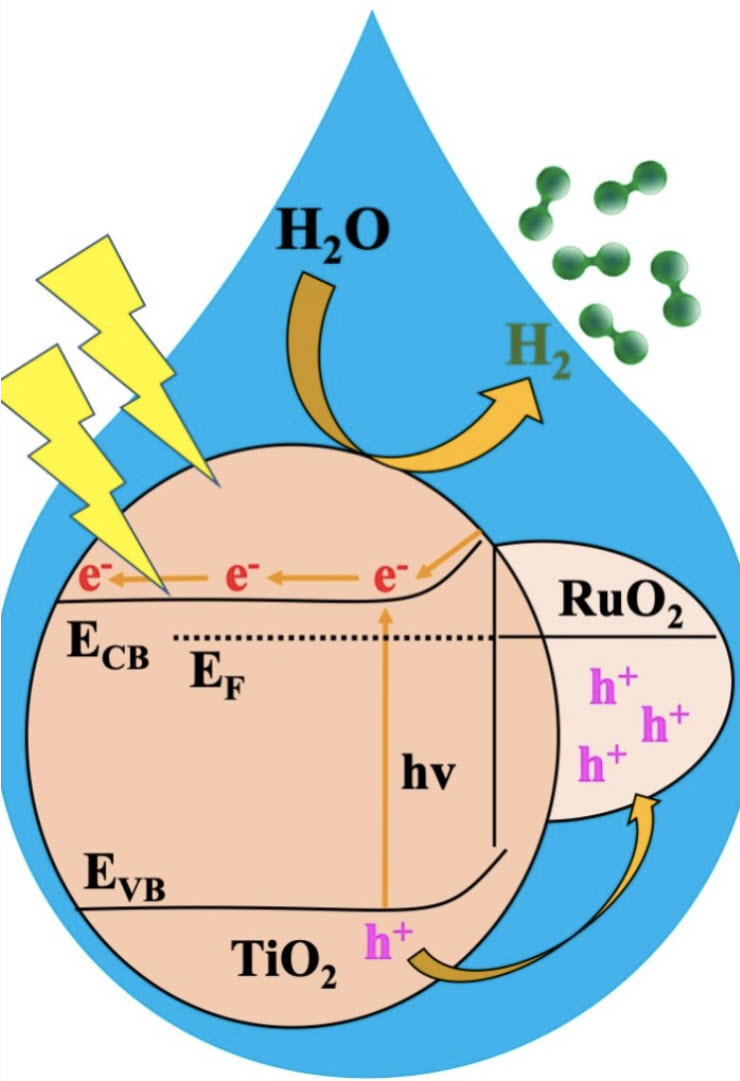
What is Ruthenium Oxide and How it Powers a Breakthrough in Hydrogen
July 29, 2024Dive into the world of hydrogen with a groundbreaking discovery
Picture a material so innovative that it can harness sunlight and water, two abundant resources, and seamlessly convert them into hydrogen, a clean and sustainable energy source. This is the realm of ruthenium oxide, a catalyst developed by scientists at Oregon State University, making waves in the fight against climate change and greenhouse gas emissions.
The Discovery
Scientists at Oregon State University have crafted an innovative material capable of transforming sunlight and water into clean energy. This groundbreaking photocatalyst offers a rapid and efficient way to produce hydrogen, an essential player in the battle against greenhouse gas emissions and climate change.
How It Works
Led by Kyriakos Stylianou from the OSU College of Science, the research team focused on metal-organic frameworks (MOFs), which are crystalline, porous materials. By combining MOFs to create a metal oxide heterojunction—a blend of two materials with complementary properties—they devised a catalyst that efficiently splits water into hydrogen when exposed to sunlight.
The Key Components
The heterojunction, dubbed RTTA, includes MOF-derived ruthenium oxide and titanium oxide doped with sulfur and nitrogen. After experimenting with various RTTAs, they found that RTTA-1, which had the lowest ruthenium oxide content, delivered the fastest hydrogen production rate and a high quantum yield.
Impressive Results
Stylianou highlighted that just one gram of RTTA-1 could produce over 10,700 micromoles of hydrogen in an hour by utilizing light particles, or photons, at an impressive efficiency rate of 10%. This means that out of every 100 photons hitting RTTA-1, 10 contributed to hydrogen production.
Why It Matters
The significance of this breakthrough in green hydrogen production cannot be overstated. Unlike traditional methods of hydrogen extraction, such as electrolysis, which often require substantial amounts of energy and lead to considerable carbon dioxide emissions, the ruthenium oxide-based catalytic process utilizes sunlight and water—two abundant resources—resulting in a cleaner and more sustainable approach. This innovative method not only minimizes environmental impact but also enhances energy efficiency.
Economic Viability
Although ruthenium oxide is costly, the minimal amount required for the photocatalyst makes it economically viable. For industrial applications, stability and reproducibility are paramount, rendering the cost of ruthenium oxide less significant.
The Future of Hydrogen Production
Currently, hydrogen production from water via electrocatalysis depends on renewable energy and must be cost-effective to compete in the market. Photocatalytic hydrogen production offers an alternative route to a sustainable energy economy. Combining two materials with complementary properties in heterojunctions significantly enhances photocatalytic activity, making this a promising area for future energy solutions.
Impact and Future
The development of this photocatalyst paves the way for a significant reduction in greenhouse gas emissions by providing a cleaner method of hydrogen production. It offers a promising alternative to traditional, more pollutive processes of hydrogen extraction from natural gas, aligning with global efforts to achieve carbon neutrality. The economic viability of this breakthrough, despite the initial cost of ruthenium oxide, highlights its potential for widespread adoption in industrial and commercial applications. By utilizing abundant resources such as sunlight and water, this discovery not only contributes to the sustainability of energy production but also reduces our dependence on finite fossil fuels. The synergy of materials in the heterojunctions presents a new frontier in photocatalytic technology, showing that sustainable energy solutions can be both innovative and economically feasible.
Looking forward, this breakthrough represents an important step in the evolution of a sustainable energy economy, with implications for how we power our world in the future.



 With over 15 years of reporting hydrogen news, we are your premier source for the latest updates and insights in hydrogen and renewable energy.
With over 15 years of reporting hydrogen news, we are your premier source for the latest updates and insights in hydrogen and renewable energy.